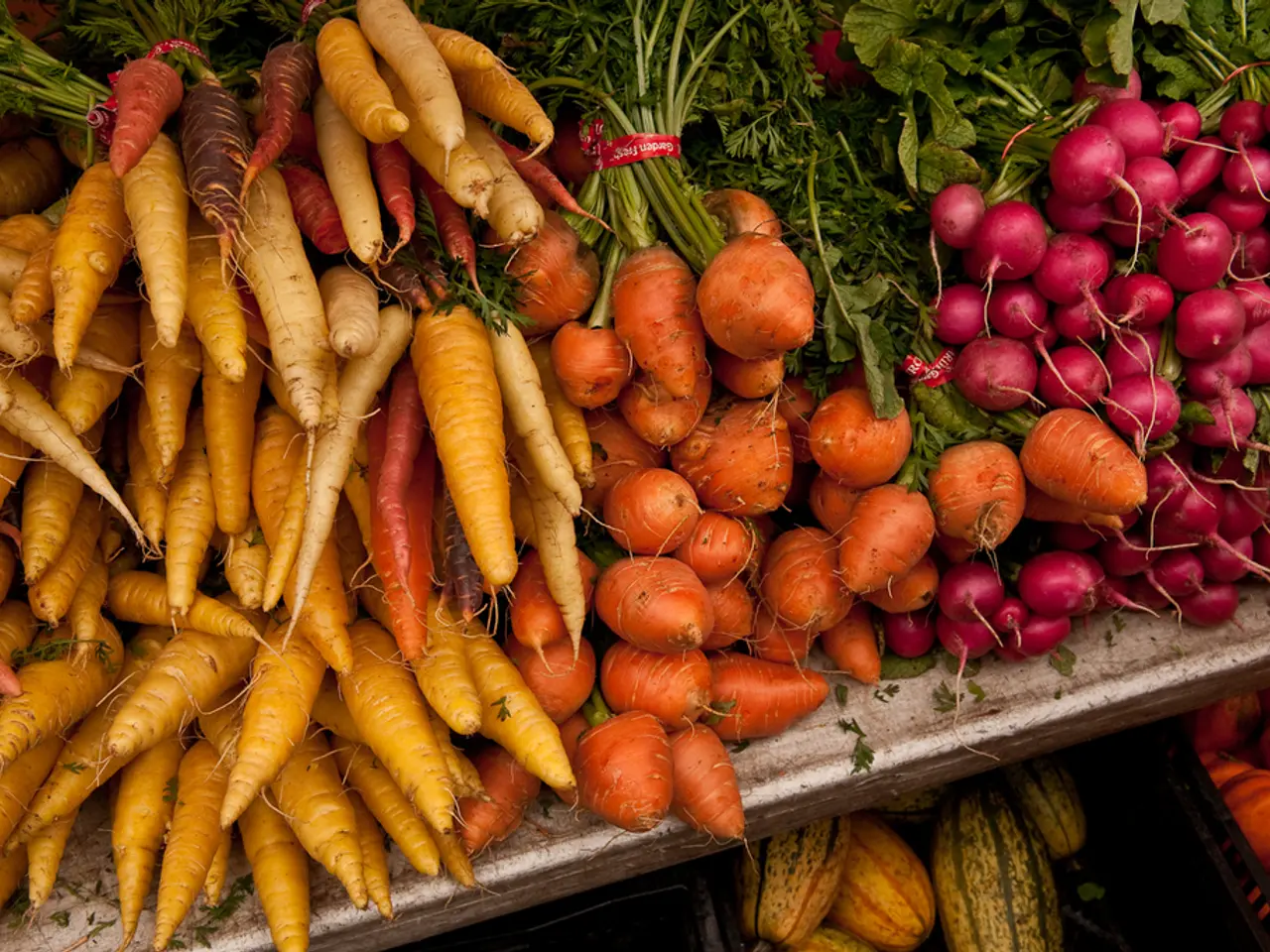Guide to Cultivating Vegetables from Leftover Kitchenware
Growing Your Own Kitchen Vegetables: A Simple Guide
Have you ever thought about growing your own vegetables from kitchen scraps? It's a fun and rewarding process that can save you money, reduce kitchen waste, and provide you with fresh, homegrown produce. Here's a guide to help you get started.
Spring Onions
To regrow spring onions, cut the green tops leaving about 2 inches of the white root end. Place the white root ends in a small glass with enough water to cover the roots. Put the glass on a sunny windowsill and change the water every couple of days. New green shoots will regrow in about a week, and you can harvest continually by snipping the tops. After shoots grow several inches, you can transplant them into soil for a fuller growth.
Potatoes
Use potatoes with visible "eyes" (sprouts). Cut the potato into chunks, each with at least one eye. Allow cut pieces to dry for a day to form a callus, preventing rot. Plant pieces with eyes facing up about 4 inches deep in loose, well-draining soil. Keep the soil moist and place in a sunny location. New potato plants will grow in a few weeks.
Garlic
Separate individual cloves from a bulb without peeling. Plant cloves upright (pointed side up) about 2 inches deep and 4 inches apart in soil. Garlic prefers full sun and well-drained soil. Keep the soil moist but not waterlogged. Garlic takes several months to mature but you’ll see green shoots after a couple weeks.
Lettuce
Cut off the base of a used lettuce head, leaving about 1-2 inches. Place the base in a shallow dish with water, leaving just the bottom submerged. Put it near sunlight and change the water every day or two. New leaves start to grow in about a week. Once leaves are a few inches long, transplant the lettuce base into soil to continue growing.
Sweet Potatoes
Choose sweet potatoes with healthy "slips" (vine shoots). Place the sweet potato in water with half submerged or lay in moist soil. Wait for shoots (slips) to grow several inches. Remove slips carefully and plant individually in soil. Sweet potatoes need warm weather and well-drained soil; harvest when vines start to yellow.
General Tips
- Use clean containers and fresh water to avoid mold or rot.
- Provide plenty of indirect sunlight, ideally on a windowsill.
- Change water regularly if rooting in water.
- Transplant to good-quality potting soil once regrowth is established to encourage stronger plants.
- Be patient as regrowth takes time—sometimes several weeks.
- Keep soil moist but not soggy to avoid rotting.
This method is applicable to most seeds, according to Marcelle Swanson, edibles category manager at the Diggers Club. So, why not give it a try and enjoy the large amount of satisfaction that can come from growing your own food and vegetables.
Remember, when growing from scraps, it's important to use heirloom or organic produce to ensure they haven't been genetically modified to stop regrowing. Also, when growing potatoes, it's recommended to use 'certified seed potatoes' to avoid vegetable diseases.
Happy gardening!
[1] Swanson, M. (n.d.). Growing Vegetables from Kitchen Scraps. The Diggers Club. https://www.diggers.com.au/blog/growing-vegetables-from-kitchen-scraps/ [3] The Spruce Eats. (n.d.). How to Regrow Kitchen Scraps. The Spruce Eats. https://www.thespruceeats.com/regrow-kitchen-scraps-1413581
Enjoy the process of home-and-garden pursuits, as growing your own kitchen vegetables from scraps can be a rewarding part of your lifestyle. With the right care and attention, you can successfully regrow vegetables like spring onions, potatoes, garlic, lettuce, and sweet potatoes, as detailed in the guide above.





